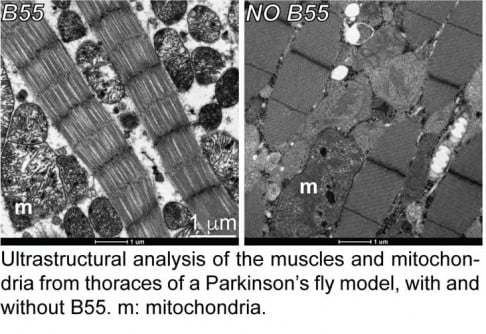Science
Researchers Identify Key Switch for Mitochondrial Health in Cells

A significant breakthrough in cellular health has emerged from research conducted in Rome, where scientists identified a crucial switch that regulates mitochondrial function. This discovery could pave the way for developing treatments for various diseases, including Parkinson’s and rare mitochondrial disorders. The switch, known as phosphatase B55 (PP2A-B55alpha), plays a vital role in maintaining the balance of mitochondria within cells.
Experts from the Università Cattolica in Rome conducted the study, which was published on October 3, 2025, in the journal Science Advances. The research revealed that reducing the activity of B55 can alleviate motor symptoms in preclinical models of Parkinson’s disease. The study was led by Francesco Cecconi, a Full Professor of Biochemistry, alongside Valentina Cianfanelli, an Associate Professor at Roma Tre University.
Mitochondrial Balance and Disease Connection
Mitochondria are essential organelles responsible for producing the energy required for cell survival. Their dysfunction is linked to numerous health issues, including common conditions like Parkinson’s disease and rare mitochondrial disorders. In healthy cells, there exists a delicate balance between the removal of damaged mitochondria and the creation of new ones. Disruption of this balance can lead to cell death, particularly affecting neurons in the case of Parkinson’s disease.
The study highlighted that B55 is instrumental in regulating this mitochondrial equilibrium. Professor Cecconi explained, “On the one hand, it promotes the removal of damaged mitochondria by stimulating mitophagy, a selective process for eliminating inefficient organelles. On the other, B55 stabilizes the main promoter of mitochondrial biogenesis, thereby controlling the formation of new mitochondria.”
This dual function of B55 is crucial, as it ensures that the removal of damaged mitochondria does not outpace the production of new ones, thus maintaining cellular health. The research demonstrated that manipulating B55 levels could significantly impact mitochondrial health and function.
Future Implications for Therapy Development
In their experiments using Drosophila models of Parkinson’s disease, researchers observed that reducing B55 levels improved both motor and mitochondrial functions. This finding suggests that targeting B55 could lead to innovative therapies aimed at protecting dopaminergic neurons from degeneration.
The potential development of small molecules designed to penetrate the brain and selectively modulate B55 activity holds promise. Such therapies could not only combat Parkinson’s disease but also address a broader range of mitochondrial disorders and neurodegenerative diseases. Professor Cecconi added that this approach may extend to oncology, as the deregulation of mitochondrial quality affects tumor cell plasticity and their resistance to treatments.
Looking ahead, the research team plans to identify safe therapeutic strategies to modulate B55 in both preclinical and human cellular models. Their goal is to explore the regulation of B55’s activity and its effects on various neurodegenerative and mitochondrial diseases.
The full findings of this transformative study are available in Science Advances under the title “The PP2A-B55a phosphatase is a master regulator of mitochondrial degradation and biogenesis.” This research signifies a pivotal step forward in understanding cellular health and its implications for treating debilitating diseases.
-

 Lifestyle3 months ago
Lifestyle3 months agoLibraries Challenge Rising E-Book Costs Amid Growing Demand
-

 Sports3 months ago
Sports3 months agoTyreek Hill Responds to Tua Tagovailoa’s Comments on Team Dynamics
-

 Sports3 months ago
Sports3 months agoLiverpool Secures Agreement to Sign Young Striker Will Wright
-

 Lifestyle3 months ago
Lifestyle3 months agoSave Your Split Tomatoes: Expert Tips for Gardeners
-

 Lifestyle3 months ago
Lifestyle3 months agoPrincess Beatrice’s Daughter Athena Joins Siblings at London Parade
-

 World2 months ago
World2 months agoWinter Storms Lash New South Wales with Snow, Flood Risks
-

 Science3 months ago
Science3 months agoTrump Administration Moves to Repeal Key Climate Regulation
-

 Business3 months ago
Business3 months agoSoFi Technologies Shares Slip 2% Following Insider Stock Sale
-

 Science3 months ago
Science3 months agoNew Tool Reveals Link Between Horse Coat Condition and Parasites
-

 Science2 months ago
Science2 months agoSan Francisco Hosts Unique Contest to Identify “Performative Males”
-

 Sports3 months ago
Sports3 months agoElon Musk Sculpture Travels From Utah to Yosemite National Park
-

 Science3 months ago
Science3 months agoNew Study Confirms Humans Transported Stonehenge Bluestones









